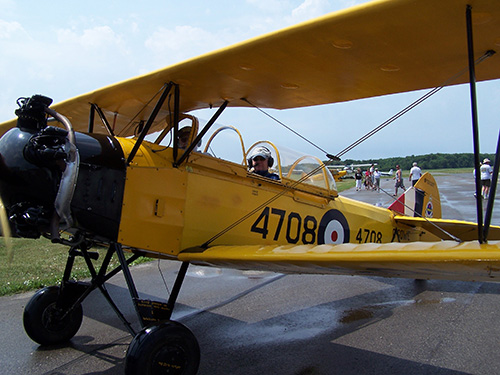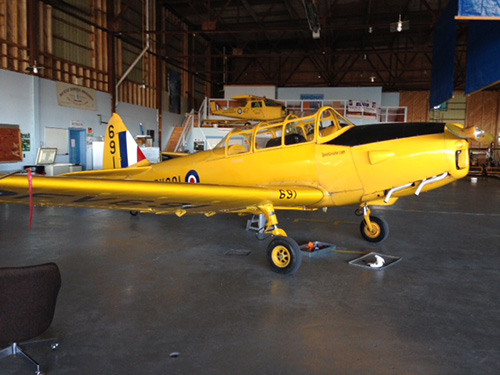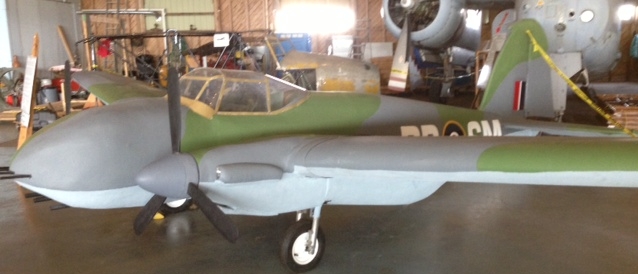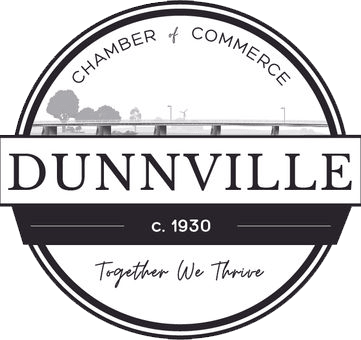The No. 6 RCAF Dunnville Museum features a beautiful collection of well-preserved WWII Vintage aircraft that you can get up close and personal with.
Our half of Hangar 1 houses a WW II vintage Fleet Finch trainer built in Fort Erie. Before the Airport was closed to flight operations, we had a Tiger Moth, a Yale, and a Harvard.
Tiger Moths and Fleet Finchs were used extensively at Elementary Flying Training Schools (EFTS).
Students were required to graduate from an EFTS before coming to a SFTS such as the No. 6 at Dunnville. Harvards and Yales were the primary aircraft used for training at Dunnville.
>> CLICK ON AN IMAGE TO VIEW IN LARGER SIZE
This photo shows a Yale, Harvard and Fleet Finch parked in front of the hangar after returning from the Tillsonburg Airshow on August 18, 2012.
The Tracker is just visible behind the Yale.
Fleet Finch 16B
The Fleet Finch 16 B (RCAF Finch MK II), # 4708, is shown here outside of the Hangar.
This is a refined version of a 1934 design with structural strengthening suitable for aerobatics.
It was built by the Canadian Fleet Aircraft Ltd. in Fort Erie. With the RCAF designation C-GQWE this plane served at No. 7 EFTS Windsor and No 13 EFTS St. Eugene Ontario before going to St. Thomas for repair training.
Powered by by a 125 hp Kinner B5 5-cylinder, air-cooled radial engine, it had a maximum speed of 104 mph, a cruising speed of 85 mph and a service ceiling of 10,500 ft.
This plane was extensively renovated by a local flying enthusiast. It was purchased by Russ Cameron, the owner of the Dunnville Airport, and donated to the Museum. It flew right up to the closure of the Airport and was then mothballed, ready to fly again if the opportunity presented itself.
Yale X9
Thanks to a generous donation through the Samsung Renewable Energy and Pattern Energy Group, the Museum acquired Yale X9 as a static display.
It was built in 1940 for the French Armee de l’Air.
After the French surrendered, it was purchased by the British Purchasing Commission for use in the British Commonwealth Air Training Plan.
Given the RCAF serial number 3416, it entered service on September 17, 1940 and initially served at No. 1 SFTS Camp Borden.
Suffering some damage at Camp Borden, it was sent to Noorduyn for overhaul and converted to an airborne wireless trainer (WT) at No. 9 Repair Depot in St. Jean, Quebec in mid-1943. It was officially designated Yale W/T, given the code X9 and served at No. 1 Wireless School in Mount Hope, Ontario.
At the end of the war it was placed in stored reserve at No. 4 Reserve Equipment Maintenance Unit (REMU) located at Brantford, Ontario.
On September 26, 1946, it was made available for sale by War Assets and passed through several private owners. Eventually it was purchased by Tom Dietrich, and was restored to a static display in the mid-1990s and placed on outdoor display at Guelph Airpark.
Yales, and the slightly more powerful Harvards, were the primary aircraft used to train pilots at the No. 6 SFTS.
Cornell
(Possible with Donation from Samsung & Russ Cameron)
Thanks again to a generous donation from Samsung and Russ Cameron, as well as the Allan Foundation, Lynda Bain, James & Dorothy Bird, Jamie Logan, Pat Logan, Tim Logan and Joe & Lois Weir we acquired a Cornell that is in beautiful condition.
Early experience indicated that Cornells were not sturdy enough to withstand the rigors of training student pilots.
This plane was in flying condition before being put on static display in the Museum.
Mosquito Bomber
We acquired a model of a Mosquito bomber, known to some as a 'Wooden Wonder,' because of its all wood construction. The model was built by Bill Rice in memory of John & Laura Rice.







